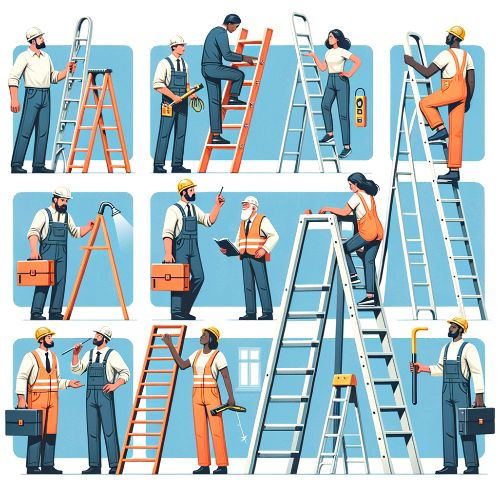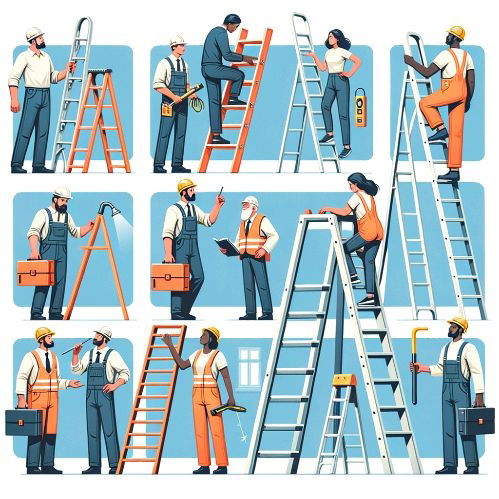Climbing to Safety: The Essential Guide to Ladder Safety

Introduction
Ladder safety is a critical concern in both the construction industry and general household maintenance. Every year, improper ladder use results in numerous accidents, some leading to severe injuries or even fatalities. Understanding and implementing ladder safety practices can significantly reduce these risks, ensuring that tasks at height are completed safely and efficiently. This article explores the foundational principles of ladder safety, offering guidance to professionals and DIY enthusiasts alike.
Understanding Ladder Safety
Ladder safety encompasses the selection, inspection, and correct use of ladders. It involves choosing the right ladder for the job, ensuring the ladder is in good condition, and using it in a manner that minimizes the risk of falls and injuries.
Selecting the Right Ladder
- Type and Size: Ensure the ladder is suitable for the task. Consider the ladder's height, weight capacity, and whether a step ladder, extension ladder, or multi-purpose ladder best suits your needs.
- Material: Ladders are commonly made from aluminum, fiberglass, or wood. Aluminum ladders are lightweight and resistant to corrosion, making them ideal for most tasks. Fiberglass ladders are preferred for electrical work due to their non-conductive properties, while wood ladders are less common due to their bulk and susceptibility to weathering.
Inspecting the Ladder Before Use
- Check for Damage: Inspect the ladder for cracks, bends, loose steps or rungs, and damaged locking mechanisms. Never use a damaged ladder.
- Cleanliness: Ensure the ladder is free from grease, oil, or other slippery substances.
Safe Ladder Usage Practices
- Stable Ground: Always place the ladder on stable, level ground. Use leg levelers if working on uneven surfaces.
- Proper Angle: For extension ladders, follow the 4-to-1 rule: for every four feet of ladder height, the base should be one foot away from the wall.
- Maintain Three Points of Contact: Keep at least three points of contact (two hands and one foot or two feet and one hand) with the ladder at all times.
- Do Not Overreach: Keep your hips within the ladder's side rails to maintain balance. Move the ladder instead of overreaching.
- Top Rungs: Never stand on the top rung of a step ladder or the top three rungs of an extension ladder.
Ladder Safety Features
Modern ladders come equipped with various safety features to enhance user security:
- Anti-slip Feet: Rubber or plastic pads on the ladder's feet improve stability.
- Safety Locks and Braces: Ensure extension ladders are securely locked before climbing.
- Handrails and Platforms: Some ladders feature handrails or platforms for additional support.
Training and Education
Comprehensive ladder safety training is essential, especially for professionals. Many organizations offer ladder safety courses that cover best practices, OSHA regulations, and rescue procedures.
Conclusion
Ladder safety is paramount in preventing accidents and ensuring a safe working environment. By selecting the appropriate ladder, conducting thorough inspections, and adhering to best practices for use, individuals can significantly mitigate the risks associated with working at height. Remember, safety climbs with you every step of the way.
